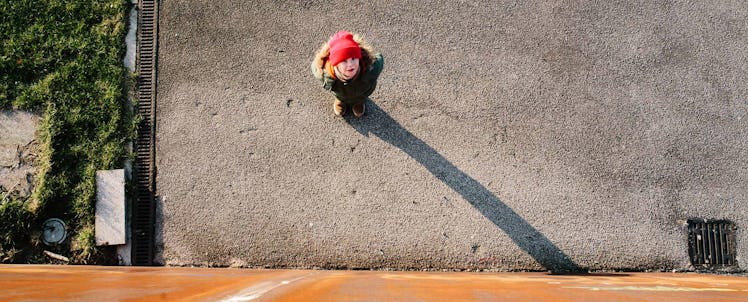We Can Afford a Wall, But We Can’t Afford to Invest in Our Kids
Congress failed to keep the president from spending billions in emergency funding for a border wall. That's money American kids and parents could have used.

Congressional House members have failed to override President Trump’s veto of a congressional resolution denying his southern border emergency declaration. That clears the way for the President to secure emergency funding for a border wall, a project the majority of American voters object to according to a March 12 Rasmussen poll. The cost of defying the will of the American people to score political points with his base? Roughly $22 billion. The money would have been better spent addressing a real dual crisis: America’s underfunded parents and plummeting birth rate.
The Department of Education’s annual budget is roughly three times the cost of the wall — if $22 billion is the final cost and there’s a reason to believe that it is an unrealistic estimate. Assuming the cost would be somewhere between the DHS estimate and the Democratic estimate of $55 billion, it’s clear a slate of programs for children — investing in the real future of the country — could have been funded with the money. Here’s a sample of what tens of billions of dollars could have accomplished for American families.
- Universal Pre-Kindergarten for every 3 and 4-year old: One estimate suggests it would cost $26 billion per year but result in an economic windfall of $8 for every dollar invested, with an estimated $307 billion return in total benefits by 2050 according to a high profile study.
- Universal child care: Elizabeth Warren has a plan to make this happen, and her program would cost $1.7 billion over ten years with 12 million children receiving care, according to Moody’s financial services estimates.
- Universal coverage for maternity care allowing couples to save as much as $4,000 in out of pocket cost for delivering a child.
- Complete health care coverage for all uninsured children via an expansion of the Child Health Insurance Program: This would cover the remaining 4.6 million American children under the age of 18 who are not covered by employer-funded insurance, Affordable Care Act, or Medicaid. Considering that in 2017 the Department of Health and Human Services requested $3 billion to fund CHIP through 2019, $22 billion would be more than adequate to insure all uninsured kids for years to come.
- Increased pay for public school teachers, and increased funding for public schools in general: Happy teachers mean happy, better-educated kids. Kamala Harris has a plan to increase every teacher’s pay by $13,000. She estimates it would cost $315 billion over 10 years. The cost of the wall would be adequate to cover the first year of Harris’s program.
- Longer school days to relieve parents of costly after-school child care that can average $214 per week.
- 2,000 years of government Special Olympics funding: That would more than make up for the recent Department of Education proposal to cut funding for the program which costs the department just $17 million a year in grants.
- Monthly cash allowance for all American children: This is a popular program in Finland that would help parents pay for raising kids while also boosting spending from the middle class. Considering that current tax allowances grant $1000 for every dependent child in America and there are 74 million children under the age of 18, it would only take $74 billion to give every family an annual $1000 check or a monthly cash allowance of $83 per kid.
- Thirty-six weeks of guaranteed paid parental leave: The government could help subsidize employer supported parental leave, allowing parents to stay home for almost the first year of a child’s life. This not only improves the intellectual outcomes of children, it ensures more people, particularly women, stay in the workforce. This is roughly half of the amount of leave parents are granted in Sweden, which spends about 0.8 percent of its GDP on parental leave.
- Baby bonds for America: This plan backed by Cory Booker amounts to a public trust fund for American babies that can give them up to 50k by the time they turn 18 to put towards a house or education.
- Putting tampons in public schools: In one school district, the simple act of providing tampons led to a 2.4 percent increase in school attendance.
- Increased investment in SNAP, WIC, and TANF: These welfare programs lift kids out of poverty. Increased funding would allow the government to end work requirements for these programs and increase enrollment.